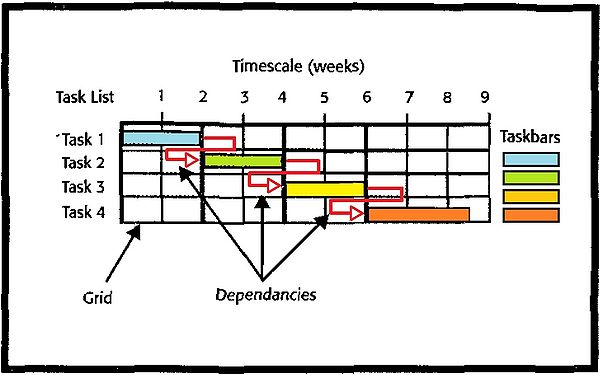Gantt Charts as a Tool for Project Management
This article is written in connection with course 42433 Advanced Engineering Project, Program and Portfolio Management at The Technical University of Denmark in the autumn of 2015.
A project is a unique set of processes which consist of different activities and tasks to be performed before reaching the project objectivities. During a project unique and complex problems are solved under un-predictable conditions, varying collaborations and great time pressures. All of these characteristics make it incredibly difficult to manage the individual flows of the project. However there are tools that help project managers to manage the project planning and monitoring the schedule to keep track of all activities that needs to be performed. The most common tool is the Gantt Chart because of its simplicity and easy application to any project. It forms a baseline for the lifetime of the project to measure if it is on track or not. Furthermore it helps organizations understand what they are achieving and what they wanted to achieve.
This article aims at providing information about Gantt Charts as a planning/monitoring tool for complex projects and how to apply and benefit from them in project manage-ment but also what challenges and limitation there are to the tool. This article is based on the course material as well as literature reviews of scientific research papers and other influential publications on the subject, Gantt Charts, within the academic fields of Advanced Engineering Project, Program and Portfolio Management.
Contents |
The Big idea
The earliest Gantt chart appeared in the 1890s. It was created by a Polish engineer by the name of Karol Adamiecki who ran a steelwork in the southern Poland. He was in-terested in different ideas and techniques within management. But 15 years later an American engineer, Henry Gantt, came up with his own version of the chart during his work on the construction of Navy ships during world war one. His version of the chart eventually became widely known and popular and therefore Henry Gantt was the one who laid name to the chart. The Gantt chart has changed very little over the past 100 years and is still thought of as an essential project management tool because of the many advantages that the chart provides.


The tool is very commonly used in project management because it gives a clear overview of:
- What the different activities within the project are
- When each activity is initiated and when the deadline is
- How long the activity lasts
- Overlap between activities and by how much
- The start and end of the entire project
The main objective of a Gantt Chart is to estimate the duration of a project and to establish the order in which the different tasks that need to be carried out.
Application
Gantt charts used to be prepared by hand and therefore the chart needed to be redrawn every time there was a change in the project which posed some limitations to the usefulness of the chart. However with the invention of the computer along came project management software which makes the tool much easier to handle and update when changes occur.
Application
The Gantt Chart is very simple to use and understand and they are used by most project managers for project planning and scheduling.
Gantt charts used to be prepared by hand and therefore the chart needed to be redrawn every time there was a change in the project which posed some limitations to the usefulness of the chart. However the invention of the computer along came project management software which makes the tool much easier to handle and update when changes occur. Today the chart is most commonly used for monitoring project schedules.
Planning, complexity, human behavior
Limitations and challenges
Annotated bibliography
- ↑ [www.gantt.com] http://www.gantt.com/
- ↑ [Uncharted Territory] Orr, 2003
- ↑ [www.projectmaster.co.uk] https://www.projectsmart.co.uk/how-gantt-charts-can-help-avoid-disaster.php
- ↑ [www.gantt.com] http://www.gantt.com/
